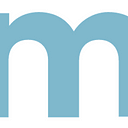Actionable tactics for managing cashflow (in good times and bad)
We’ve all heard the saying ‘cash is king.’
There’s a reason why — a strong cashflow means the difference between success and failure in small business. Being in command of your business vitals, proactively building your cash position, and planning ahead for major cash events all go a long way in building a healthy, sustainable business.
As recent events have highlighted, markets and global incidents can sometimes work against even the most prepared business owner. If you are a small business owner looking to improve your current and future cash position, consider the following areas:
Scrutinize The Outflows
As a business owner, it’s not uncommon to lose track of all your expenses…you’re focused on growing the business, and there’s a steady stream of new vendors, contractors, licenses, etc. that enable that growth, but also add to the complexity of your expense structure. It is important to regularly review your outflows and ensure they are contributing to your growth.
When times are tough, outflows can be the most controllable lever available. Depending on the severity of your situation, you can freeze any non-essential spending and delay planned investments. Of course, there are operational costs that you must continue in order to actually ‘run’ your business. However, there is other spend that, while possibly important for the future of your business, doesn’t help strengthen your position in the short term.
Talk to your vendors about extending terms of your obligations. Offering to pay more than you owe, but over a longer period of time, might be a worthwhile trade.
Locking down outflows also means taking a hard, objective look at your staff options. If the cash crunch is that perilous, you may have to consider compensation reductions, reduced hours, furloughs, and more.
Take Charge of Your Inflows
In times of a cash crunch, it’s the role of a business owner to take full responsibility and accountability for their accounts receivable. Now is the time to take charge of your overdue invoices, negligent accounts, and more. Collecting money, especially from customers, may not be the most pleasant task, but it’s critical to maintaining cashflow for your business. Consider offering discounts for fast payments, or penalties for late payments.
This is also a time to consider adjacent revenue opportunities. For example, if you are a services firm that offers consulting, be mindful of sharing your expertise for free. Instead, consider charging for a discovery engagement, or even complementary services that you normally conduct at no charge.
And finally, review your corporate insurance policy, as there may be options available (business interruption coverage, etc.) to free up some capital to help navigate this time.
Transform Assets to Cash
Depending on the structure of your business, you may have assets that can be leveraged for cash. For instance, inventory and raw materials can serve as a borrowing base for credit from your lender. Likewise, real estate and other assets like equipment can support a loan as collateral. If you have a significant level of high-quality receivables, you may also be eligible to borrower against Accounts Receivable assets; this type of financing is often called factoring and there are lenders who specialize in factoring.
Tap Into Your Capital Sources
Oftentimes, owners don’t want to admit to their banks or investors that they’re in the midst of a cash crunch, as it may affect future discussions of continued investments.
Remember that your capital sources are well aware of the ups and downs of managing a successful business, and know all too well that even the best business owners must navigate tough financial times. Firsthand experience of many business owners is that it’s always better to communicate early and openly with investors and creditors about any potential financial trouble.
If you see trouble ahead or a softening economy, it may be wise to draw down your lines of credit, and talk openly with your bank about your options on existing debt. Lenders may have forbearance and deferral options available.
Further, revisit your seller notes, and discuss your capital options with investors. While you may have to make small concessions, your investors are committed to the financial future and health of the business. In extreme cases, there are investors who focus on distressed situations. If you have a strong underlying business with short term financial difficulty, you may be able to find an investor (though be prepared to accept terms that reflect the situation).
Know Your Numbers
We know that most owners started their businesses to pursue their passion, not to be bogged down with financial, accounting, and banking tasks.
However, it’s these tasks that ensure that you can continue to pursue your passion. While business owners certainly don’t have to become financial gurus, we do recommend that they get comfortable with their numbers. Keeping your accounting system updated on a regular basis, as well as an updated 13-week cash flow forecast on hand, can all help spell out the true state of the business, and the work that needs to be done to bring it back on track.
Take a Look at Cash Forecasting Tools
The desire of business owners to take control of their cash has led to tools such as Monit, which helps improve cashflow so your business can thrive. Connected to your online accounting software and powered by patent-pending intelligence, Monit is a 100% private and secure cashflow prediction tool that helps you see, evaluate, and act quickly to improve your cash and optimize your business performance.
Want to see Monit in action? Check out our product video here and ask your bank whether they offer Monit to customers.
